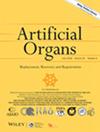Effects of Medium Cut-Off Dialyzers on Fat Tissue and Muscle Mass Indices
Abstract
Background
Medium cut-off (MCO) dialyzers are designed to provide clearance of large–middle molecular weight uremic toxins and cytokines that are also responsible for the pathogenesis of sarcopenia.
Aim
To investigate the short- and long-term effects of MCO dialyzers on fat and muscle mass.
Methods
This single-center prospective, cross-over study includes 20 maintenance hemodialysis (MHD) patients treated with low-flux (LF) dialyzers. Baseline parameters were measured under LF dialyzers and repeated at 2nd week and 6th month after switching to MCO dialyzers. Fat tissues were measured with a skinfold caliper and mid-upper arm circumference. Muscle thickness and strength parameters were measured with ultrasound and handgrip tests.
Results
Median skinfold thickness showed a statistically significant increase in the second week of HD with MCO dialyzers [15 mm (10, 17) to 16 mm (13.3, 19.8), p = 0.04] and remained similar in the 6th month (p = 0.08). There was a gradual increase in median mid-upper arm circumference with a significant increase in the 6th month [28 (27, 29.5), 28.5 cm (27, 30), and 30.6 cm (26.7, 32), respectively, p = 0.03]. Significant increases were detected in the measurements of all four abdominal muscle groups (p = 0.03 for rectus abdominis and external oblique; p = 0.002 for internal oblique and transversus abdominis) in the 2nd week of MCO dialyzers and remained similar in the 6th month. Median RF and GCM thicknesses also significantly increased in the 2nd week (p = 0.001 and p < 0.001, respectively). The thicknesses of the external oblique, internal oblique, transversus abdominis, and rectus femoris muscles showed no significant differences in the 6th month. We also observed significant increases in the median GCM fibril length and GCM fibril pennation (p = 0.01 and p = 0.008, respectively) in the 2nd week, which also remained similar in the 6th month. The handgrip strength test showed a gradual increase at each time point without statistical significance.
Conclusion
MCO dialyzers provide increased fat and muscle mass, which might be due to their better clearance of uremic toxins compared to low-flux dialyzers. This study serves as a hypothesis-generating investigation; larger randomized controlled trials are required to validate the hypothesis.

 求助内容:
求助内容: 应助结果提醒方式:
应助结果提醒方式:


